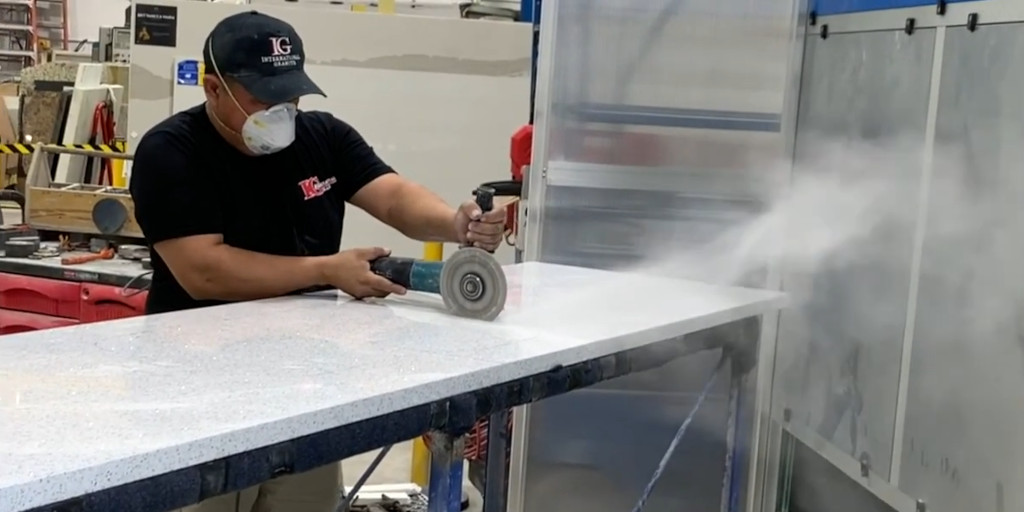Mastering Stone Cutting Dust Collection: A Guide to Choosing the Right System
Stone cutting operations, whether in a workshop or on a construction site, generate a significant amount of dust. This dust poses health risks to workers and can also damage equipment and surrounding areas. To mitigate these risks, it’s crucial to invest in high-quality dust collectors specifically designed for stone cutting tasks. In this guide, we’ll explore the various types of dust collectors available for stone cutting applications.
Cyclone Dust Collectors
Cyclone dust collectors are widely used in stone cutting industries due to their efficiency in capturing large particles. These collectors work by using centrifugal force to separate dust particles from the air stream. As the dusty air enters the cyclone, it spirals downward, causing the heavier particles to drop into a collection bin. Cyclone dust collectors are relatively low maintenance and are suitable for heavy-duty stone cutting operations.
Baghouse Stone Cutting Dust Collectors
Baghouse dust collectors are another popular option for stone cutting facilities. They utilize a series of fabric bags to filter dust particles from the air. As the air passes through the bags, the dust is trapped while the clean air is released back into the environment. Baghouse collectors are effective at capturing fine particles, making them ideal for operations where stone cutting generates fine dust. However, regular maintenance is required to ensure optimal performance.
Cartridge Stone Cutting Dust Collectors
Cartridge dust collectors are compact and versatile, making them suitable for smaller stone cutting workshops or mobile operations. These collectors use pleated cartridges to filter dust particles from the air. Cartridge collectors offer high filtration efficiency and can handle a wide range of particle sizes. They are easy to install and require minimal maintenance, making them a convenient choice for many stone cutting applications.
Wet Stone Cutting Dust Collectors
Wet dust collectors use water to capture and suppress dust particles generated during stone cutting processes. These collectors are highly effective at controlling dust emissions and are particularly useful in environments where dry dust collection systems may not be suitable. Wet dust collectors are easy to operate and maintain, but they may require additional precautions to prevent water damage to equipment and surrounding areas.
Electrostatic Precipitators
Electrostatic precipitators use electrostatic forces to charge dust particles, causing them to adhere to collection plates or surfaces. These collectors are effective at capturing both large and small particles and are often used in conjunction with other dust collection systems for enhanced efficiency. Electrostatic precipitators require regular cleaning to maintain their effectiveness and may be more complex to operate compared to other types of dust collectors.
Bench Style Dust Collectors
Bench style dust collectors are designed to be mounted directly onto workbenches or cutting tables, providing localized dust collection for stone cutting tasks. These compact collectors typically feature a small footprint, making them ideal for workshops with limited space. Bench style dust collectors are convenient for capturing dust at the source, ensuring that it doesn’t spread throughout the workspace. While they may have limited capacity compared to larger systems, they are effective for smaller scale stone cutting operations.
Mobile Dust Extraction Arms
Mobile dust extraction arms offer flexibility and versatility in capturing dust from stone cutting processes. These arms can be easily maneuvered to different locations as needed, providing targeted dust collection where it’s most needed. Mobile extraction arms are commonly used in conjunction with larger dust collection systems or as standalone units in smaller workshops or construction sites. They are particularly useful for capturing dust from handheld cutting tools or in areas where fixed dust collection systems are impractical.
Including bench style dust collectors and mobile dust extraction arms provides a more comprehensive overview of the different options available for stone cutting dust collection. These additional options cater to specific needs, whether it’s localized dust collection at workstations or flexibility in capturing dust from various cutting tools and locations.
In conclusion, choosing the right dust collector for stone cutting operations is essential for maintaining a safe and healthy work environment. Whether you opt for a cyclone, baghouse, cartridge, wet, or electrostatic precipitator system, be sure to consider factors such as the size of your operation, the type of stone being cut, and the level of filtration required. By investing in the appropriate dust collection equipment, you can effectively manage dust emissions and ensure the well-being of your workers and the longevity of your equipment.

